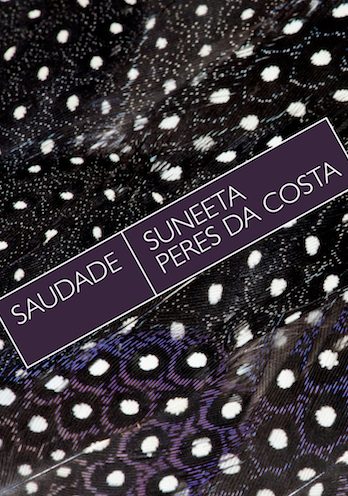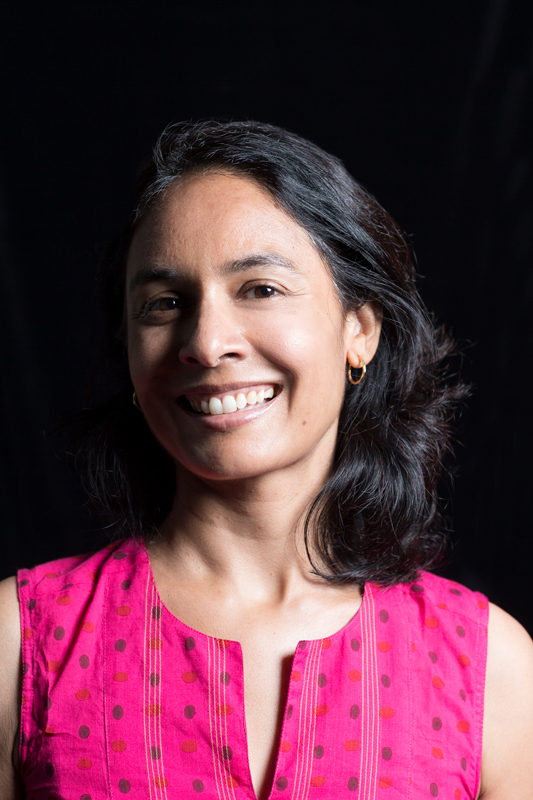Orphans of Empire: Saudade by Suneeta Peres da Costa
Towards the end of the novella Saudade, as the now teenage protagonist Maria-Cristina, the daughter of Goan immigrants in Angola, sits facing the Mozambican family servant Caetano on the eve of Angolan independence, she realizes that they are both ‘orphans of Empire’. The author, Suneeta Peres da Costa, has given us an evocative language for understanding the liminality of these two characters. They are both orphans or soon-to-be orphans, and also abandoned as Portuguese colonial rule crumbles in the 1970s.
The narrator Maria-Cristina was born in Angola but she has grown up hearing about the rivers, paddy fields, churches and hills of her parents’ native coastal homeland of Goa. Over time, she becomes aware of the collusion of her parents’ class of elite Goans with Portuguese rule, and she has come to embrace the ideas of anti-colonial nationalists like Agostinho Neto. Caetano is the child of a Danish father and Mozambican mother, who is raised in an orphanage after his mother dies and his father returns to Copenhagen. He is brought to Maria-Cristina’s home as a child servant before she is born. As the Empire is coming under attack in Angola, Maria-Cristina has neither the attachments to her parents’ homeland, nor their political affiliations to ground her. Caetano is reliant on his employers and in a way ‘doubly orphaned’ because Mozambique has already been made independent. In the shifting tides of newly decolonising African states, Maria-Cristina and Caetano are both set adrift.
The title of the novella, Saudade, is a Portuguese term that the narrator describes as ‘a lostness, a feeling of not having a place in the world’. Maria-Cristina uses the term when speaking of her boyfriend Miguel, a factory foreman and the child of Portuguese communists in Angola who shares their leftist and anti-colonial tendencies. He was young when his parents left Portugal, and ‘they did not know how to return to a life they had forgotten.’ The sense of saudade pervades the lives of the characters in the novella more generally, especially Maria-Cristina’s mother who gradually retreats into the past through old photographs and letters.
Peres da Costa weaves sadness and longing through the pages of this piercingly beautiful novella. It is composed in eleven chapters and at times reads like a prose poem. Each chapter contains one block of extended text that is unbroken by paragraphs or breakout dialogue. Instead the author combines scenes, dialogue, and narration in continuous and exhilarating prose. It is reminiscent of the stream of consciousness style employed by James Joyce, an author whose work Peres da Costa explored in some depth in her graduate study.
The world of the novella is a microcosm of the Nação Portuguesa, or Portuguese Empire. As Alan Machado has described in his book Slaves of Sultans, the Nação Portuguesa covered a dispersed community from Portugal to coastal Africa, Goa, Brazil, Sri Lanka, South-east Asia, Macau, and Timor. Portugal’s colonial subjects were connected by the Portuguese language, the imposed religion of Christianity, Portuguese law and social codes, and the institution of slavery. The Portuguese rulers brought African slaves to Goa from 1530 to 1740. After the transport of slaves on the Indian Ocean was prohibited and following the 1857 mutiny of Indian sepoys against British rule, the Portuguese imported black soldiers from Brazil into Goa.
In her book Between Empires, Rochelle Pinto suggests that racial hierarchies distinguished Catholic Goans from African and Brazilian colonial subjects. The Goan Catholic Brahmin elite was inserted into a racialised colonial matrix via the circulation of Goans in the African colonies of Portugal; in some they held control over the bureaucracy. In part, this was a result of the position of Goa as the administrative centre of Portuguese empire in the early years of colonial rule. In Saudade, Maria-Cristina’s father is part of this class of upwardly mobile Goan Catholic Brahmins – the term indicating the status of upper caste Christian converts. He is a labour lawyer who protects the interests of Portuguese and European pastoralists in the event of sickness and accidents incurred by native contract labourers.
The Goan elite was part of the Portuguese imperial enterprise in Africa, argues Pinto, and as such was engaged in the mission of civilising Africans. This is apparent early on to Maria-Cristina, when she observes her mother’s attitudes to the African servants:
My mother led me inside again, but only a few steps on stopped to look back; she looked back, clicked her tongue and said that there was no race like the Bantu race that had to be cosseted like a child because it could not look after itself. What a tragedy, she said, to be a person who cannot take care of his own affairs, who never grows up, for that is the fate not only of the blacks of Angola but all black Africans!
The infantilising of African workers is also apparent when Caetano refers to his employer as ‘Mummy’. The elite Goans in the novella adopt the paternalism of the Portuguese settlers, such as Dona Angela, a businesswoman from Madeira who says to Maria-Cristina’s mother: ‘We gave education, housing and hospitals to the blacks – where would they be without us?’
The Goan elite who staffed the bureaucracies and ran the businesses of the Nação Portuguesa in the colonies were the ‘good women and men of the Empire’. Yet this elite represents only one section of the Goan diaspora. In the wake of large-scale conversions and an Inquisition carried out by Portuguese rulers in Goa beginning in the sixteenth century, large numbers of poor and rural Goans fled south to the state of Karnataka in flimsy patmari boats, where they worked as agricultural labourers and acquired small plots of land to cultivate. While the Goan elite at home and abroad adopted Portuguese language and customs, these peasant migrants spoke only Konkani and some escaped in order to avoid conversion. As the narrator of Saudade muses: ‘how different my fate might have been had my relatives fled into the hills with their gods’. The Goan diaspora was always heterogenous and divided by class.
Peres da Costa is the daughter of Goan migrants who was born and grew up in Australia, and her work is suffused with concerns about migration, home, and belonging. She is the author of the globally acclaimed 1999 novel Homework, about a young Goan-Australian girl Mina Pereira who is negotiating life in Sydney as part of the second generation, while dealing with her mother’s mental illness and her father’s retreat from the family. In Homework as in Saudade, Peres da Costa employs the child’s perspective to great effect.
Saudade is a coming-of-age story that reveals the dilemmas and hypocrisies of colonial elites through the point of view of a child and her intellectual awakening into early adulthood. In the early part of the novella, we see Maria-Cristina’s childish adoration of her mother. She observes with careful attention as her mother dresses for an important work party, making a canopy of her hair, subduing her ponytail into a coil, pinning it to her scalp, applying kohl to her eyes and then dressing herself in a sari. The father’s angry reaction to her mother’s choice of a traditional dress, ‘Change at once!’ is followed by a phone call from India to say that her mother’s mother is gravely ill. As the father leaves for the party alone, there is a poignancy to Maria-Cristina’s attention to her mother’s stoicism as she removes her jewellery, removes her makeup, and then slow unwinds her sari.
The narrator’s relationship with her mother, like in Homework, is a difficult one. As she grows up and begins to learn more about what is taking place in the world around her, Maria-Cristina takes a more critical attitude to her mother:
For so many years, I had been like a little bird, gobbling the food, words and ideas, that she put directly into my mouth, already half-masticated. Now I began to consider what was real and what was not, what pleased me and what did not; I began dividing the world this way before swallowing…
The narrator’s awakening manifests itself in acts of rebellion, at first small and then bigger. When her school teacher asks the class if they have heard of the coloniser Bartolomeu Dias, Maria-Cristina recalls that she has heard a broadcast on Emissora Católica about a meeting between Che Guevara and Agostinho Neto, where Guevara said that Neto was an invader. So in class, to the chagrin of the teacher, she loudly declares that Neto is the invader. As a teenager, for a history project she writes an alternative biography of the Portuguese explorer Vasco da Gama that recounts the acts of terror he meted out to Muslim pilgrims and traders. While her father is furious to hear news of farm strikes on the radio, Maria-Cristina is sleeping with the communist, anti-colonialist worker Miguel who idolises the revolutionary leader Amílcar Cabral and wants to study agronomy. This is her ultimate rebellion.
Violence pervades Saudade. Chapter Two opens with the news that there has been an anti-colonial revolt in Baixa de Cassanje and one of Maria-Cristina’s father’s clients, a German cotton-farm owner, has been killed in a reprisal. The uprising at Baixa de Cassanje, led by agricultural workers who were employed by a Portuguese-Belgian owned cotton company, marked the start of the Independence struggle in Angola.
The children in the story reflect on and enact the violence that they hear. When the narrator’s mother tells her that the dead walk backwards, she has visions of ‘the dead-cotton-farm owner appearing on backward-facing feet, rounding on us with a scythe lodged in his breast.’ The child conjures up apparitions of Brazilian mutineers and escaped prisoners knocking on their door looking for safe harbour. These images mirror the fears of the colonial elite towards the rebels who hijacked the Santa Maria passenger ship to try and set up a government in Angola and the black militants who staged a revolt in the São Paulo penitentiary in Luanda, key incidents in the onset of the Independence struggle. When a domestic worker Milagre runs away after being molested by her employer, we learn of the sexual abuse through the employer’s daughter Susana, who wants Maria-Cristina to take off her clothes and lie on top of her, like ‘her father had done to their maid, Milagre.’
The narrator comes to see how the original violence can be traced to the colonisers: the slaves pressed into ships to take them to Brazil, the disposessions of Indians, the forests cleared for sugar plantations. In her history project, Maria-Cristina describes how Da Gama brutalised the traders in the Arabian Sea and the Muslims on the coast of Kerala – ‘massacring and burning people alive, cutting off their lips, ears, noses and hands.’ By contrast, anti-colonial violence such as that carried out by the People’s Movement for the Liberation of Angola (MPLA) is viewed in a Fanonian sense as a creative act, an act of freedom.
By the end, when Maria-Cristina’s family has moved to Luanda for her father’s posting, she has a new teacher from Mozambique, an open communist. Her teacher says that ‘history was written from the perspective of the victors, but there were many other, hidden sides… If we looked closely enough, could we not see?’ Alongside the dramatic political lines of the novella are these ‘hidden sides,’ the intimate spaces of everyday life. Here we can see the overlay of cultures and traditions that constitute the hybrid lived spaces of the Nação Portuguesa.
The food described in the novella is a combination of Portuguese, Goan and Angolan derived cuisines. Take for example, recheado, a Goan masala made of ground coconut and chillies stuffed into mackeral and other fish, that comes from a Portuguese word meaning ‘stuffed’. Or take the papos de anjos, Portuguese fritters fried by the Angolan servant Ifigênia; the starchy Angolan cassava flour porridge known as funje that Maria-Cristina eats for breakfast; and the Portuguese frango, or chicken, that Susana and Maria-Cristina enjoy with chilli and bread. Towards the end of the story, it is somehow symbolic that Maria-Cristina and Caetano share an African dish cafrael, a preparation of chicken legs, flavoured with tart lime and hot green chilli that was introduced into Goa through African soldiers serving in the Portuguese army.
Music, similarly, evokes these multiple worlds that make up the Nação Portuguesa. While sitting on her bed and peeling an apple, Maria-Cristina’s mother hums a konkani mando, a slow verse-and-refrain song that expresses her nostalgia for home:
Leaving all your friends this way,
To earn your daily bread you go away…
Her mother teaches Maria-Cristina a typical Goan folk song known as a dekhni, that evokes the landscape of river crossings and coastal life. When walking through the city, Maria-Cristina hears an old accordion player from Príncipe playing a mournful Portuguese fado called ‘The Boat,’ a style of music which was highly popular in Goa and other Portuguese colonies. Miguel plays the guitar and sings English popular songs from Paul McCartney. And Maria-Cristina watches from a window as a couple dances the Angolan umbigada, where the dancer extends her navel towards another dancer though they never touch. This style came to Brazil through Angolan slaves and is a key move in Afro-Brazilian dance.
Goan culture itself is a synthesis of different strands of Hinduism and Catholicism. When Goan Hindus were converted by Portuguese missionaries beginning in the sixteenth century, Catholic cultures were often syncretised with existing Hindu traditions. Alexander Henn suggests that we view this inscribing of ritual memory as a palimpsest rather than a complete replacement of one culture with another. The new layer never fully eradicates what had come before.
This is especially apparent in the rich repertoire of superstitions held by Goans and the Goan diaspora, despite these being viewed as paganistic by the church hierarchy. Maria-Cristina’s mother speaks often of bruxas, witches or ‘consorts of the dead’. Bruxas have twisted feet, she says to her daughter. Or another superstition that I recall well from my own grandfather who would never let me cut my nails at night:
It was bruxa to cut your nails after dark, as the clippings would fly into the air unseen and blind your enemy, and that is what the mistress of the husband of the teacher from Coimbra was doing as she sat on the porch with the mist rising in the air.
Or that since the dead walk backwards, if you dream about someone with their feet about-facing, you should shout to wake yourself up, before they lead you to their world.
At the same time, Catholicism was forced upon the Goan people. Goan Catholics were policed by the Portuguese authorities, made to cut off their shendis or top knots and had their religious icons destroyed. Beginning in 1560, the Portuguese Inquisition in Goa banned the traditional marriage, harvest, death, and birth ceremonies carried out by Goans. Those who were accused of continual adherence to past customs faced torture and even death.
So it is that the narrator of Saudade, uprooted both from her native land and her Hindu ancestors, is enchanted by the ancient Sanskrit epic of the Mahabharata, identifying with the heroine Shakuntala who was born among the birds and escapes to the forest to raise her son. Maria-Cristina compares this freedom with the pious chastity of Saint Teresa, whose story she must learn in preparation for her Catholic confirmation ceremony, or Crisma. In comparison to Shakuntala, Saint Teresa ‘has spent her life cloistered in a cell of a convent, meditating on mortal sin and subjecting herself to deliberate tortures.’
Another indication of the coercion involved in regulating cultural traditions relates to language. Multiple languages are spoken in the novel and Maria-Cristina’s mother herself switches easily between Portuguese and the Goan dialect of Konkani. But Portuguese is the language of Empire while Konkani, a largely agriculture-based language with a vocabulary rooted in cultivation and rural life, is to be muted. During the Maratha invasions of Goa, the Portuguese banned the use of Konkani, yet the people kept this language alive. When Maria-Cristina is taken to the doctor because she is literally mute, the doctor tells her mother that they should speak only Portuguese and not Konkani to her at home. In turn, Maria-Cristina’s mother tells Ifigênia that she should speak only Portuguese to her daughter and not Kimbundu, a Bantu language of Angola. But Ifigênia often forgets and Maria-Cristina is drawn to this language, ‘with its spirited rhythms, beautiful’.
In her desire to create a home for herself amid the slipping foundations of her past and the uncertainty of her future, it is these hybrid lived cultures that the narrator taps into – the cafrael and umbigada, the dekhnis and the mandos. This is how she recreates home:
Again I had occasion to ponder the meaning of this word, how home may be destroyed by so much strife; how it might be remade from so many makeshift and indiscriminate, even downright unsuitable, materials.
Compared to the nostalgic and essentialised vision of home that many migrants dream of, in this novella Peres da Costa is exploring how home might be much more fragile, syncretic, and rooted in the everyday cultures of the diaspora than we imagine it.
On a final meta-fictional note, the narrator ponders what it means to be a writer, as one who is always sequestered and apart from the world, compared with those who live in the world. When her boyfriend Miguel tells her she has a vivid imagination and should be a writer, she responds:
I said that I preferred to live in the world, rather than in words on a page. I preferred to be intimate with things, whereas it seemed a writer had always to be apart, sequestered, even hidden from it, to observe the world so closely.
The liminality of the writer might be compared to the position of the narrator herself, as someone who is observing the momentous changes going on around her, and yet kept cloistered away from it all by her class position and her ambivalent feelings about where she belongs.
Unlike Miguel, who wants to return to Lisbon to see the fall of the dictator António de Oliveira Salazar and then work on his aunt’s farm in the Alentejo, Maria-Cristina cannot see herself in Lisbon or Alentejo. The Mumbai port of Mazagaon is as foreign to her as these places. It is fitting that one of the final images of the book is her father’s story of mopping up kulchi codi, or leftover curry, with freshly baked pão, the Portuguese-introduced leavened bread. It is in the act of memory, transmitted through generations, that migrants and the children of migrants fashion a connection to their homelands and perhaps a fleeting sense of filial harmony.
The disjunction between words and worlds lingers, it is not one that the narrator – or the writer – can resolve. But throughout the novella we are reminded that writing is a political act, from the Mozambican teacher who talks about writing the hidden sides of history to Maria-Cristina’s own attempt to write an alternative biography of Vasco da Gama. And Saudade itself is writing in the world, engaged with the colonial violences, histories of survival, and counter-narratives of the colonised that continue to mark our world today.
Works Cited
Alexander Henn, Hindu-Catholic Encounters in Goa: Religion, Colonialism, and Modernity (2014)
Alan Machado, Slaves of Sultans (2015)
Rochelle Pinto, Between Empires: Print and Politics in Goa (2007)







